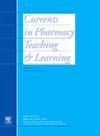学习者对将游戏化和先进技术作为本科药学课程教学方法的看法:单臂介入后评估
IF 1.4
Q3 EDUCATION, SCIENTIFIC DISCIPLINES
引用次数: 0
摘要
游戏化包括将游戏设计元素应用于非游戏情境。药学专业的学生经常遇到压倒性的资源,突出了创新策略来加强学习的必要性。目的了解尼日利亚恩苏卡大学药学本科学生对使用游戏化和先进技术(AT)作为教学方法的看法。方法采用分层随机抽样的方法,从药学专业班级中抽取单臂介入后调查对象。干预包括一个基于视频的教程,教育学生游戏化和AT,然后是b谷歌形式的问卷调查,以收集反馈。描述性统计总结了数据,而卡方分析和回归分析确定了影响感知和结果的因素。结果共有441名学生参与调查,回复率为72.1%,其中女生271人(61.5%),校外学生266人(60.3%)。只有26名学生(5.9%)认为传统教学方法有效,197名学生(44.7%)认为难以理解课程内容,282名学生(63.9%)采用死记硬背的方法。干预前,105名(23.8%)和222名(51.4%)分别熟悉游戏化和AT概念。干预后,244人(55.3%)同意游戏化,258人(58.5%)同意采用模拟学习等先进技术来改善学习体验。性别(男性)是药学教育中游戏化和AT获得积极结果的可能性较低的预测因子(OR: 0.394, 95% CI: 0.230-0.673, p = 0.001)。总体而言,药学学生对游戏化和先进技术有一定的了解,并且大多数人认为这些方法可以提高他们的学习效果,这表明将这些方法纳入药学教育具有很大的潜力。本文章由计算机程序翻译,如有差异,请以英文原文为准。
Learners' perspective on the inclusion of gamification and advanced technology as teaching methods in undergraduate pharmacy curriculum: A one-arm post-interventional assessment
Background
Gamification involves applying game design elements to non-game contexts. Pharmacy students often encounter overwhelming resources, highlighting the need for innovative strategies to enhance learning.
Objective
To assess undergraduate pharmacy students' perceptions of using gamification and advanced technology (AT) as teaching methods at the University of Nigeria Nsukka (UNN).
Methods
A one-arm post-interventional survey was conducted, using stratified random sampling to select participants from professional pharmacy classes. The intervention involved a video-based tutorial educating students on gamification and AT, followed by a Google form questionnaire to gather responses. Descriptive statistics summarized the data, while Chi-square and regression analyses identified factors influencing perceptions and outcomes.
Results
A total of 441 students participated (response rate = 72.1 %), with 271 (61.5 %) female participants and 266 (60.3 %) living off-campus. Only 26 (5.9 %) found traditional teaching methods effective, and 197 (44.7 %) reported difficulty understanding course content, with 282 (63.9 %) resorting to cramming. Prior to the intervention, 105 (23.8 %) and 222 (51.4 %) were familiar with gamification and AT concepts, respectively. After the intervention, 244 (55.3 %) agreed that gamification and 258 (58.5 %) advanced technology such as simulated learning to improve learning experiences. Gender (being male) was a predictor of a lower likelihood of achieving positive outcomes from gamification and AT in pharmacy education (OR: 0.394, 95 % CI: 0.230–0.673, p = 0.001).
Conclusion
Overall, pharmacy students had a fair knowledge of gamification and advanced technology, and most believed that these approaches would enhance their learning outcomes, suggesting a strong potential for integrating such methods into pharmacy education.
求助全文
通过发布文献求助,成功后即可免费获取论文全文。
去求助
来源期刊

Currents in Pharmacy Teaching and Learning
EDUCATION, SCIENTIFIC DISCIPLINES-
CiteScore
2.10
自引率
16.70%
发文量
192
 求助内容:
求助内容: 应助结果提醒方式:
应助结果提醒方式:


